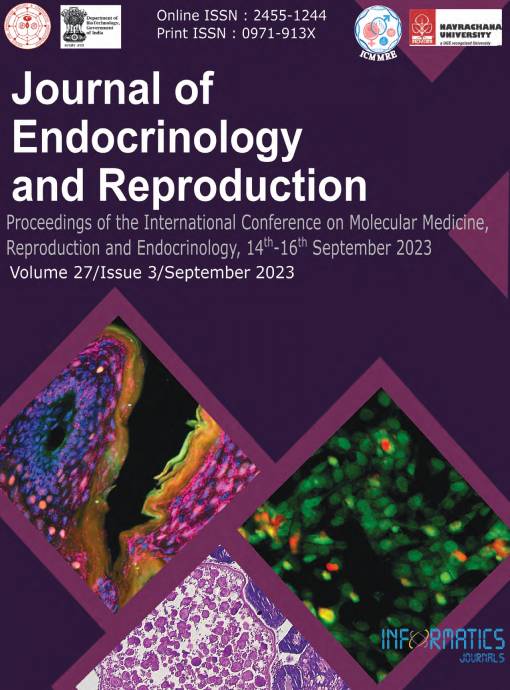From Captivity to Conservation Success: A Review on the Mouse Deer Breeding Program and its Implications for Biodiversity Preservation
DOI:
https://doi.org/10.18311/jer/2023/34990Keywords:
Captive Breeding, Conservation, Ex-Situ, Mouse Deer, ReintroductionAbstract
Captive breeding has become an important tool for conserving threatened species. The success of these conservation programs depends on the survival of species through self-sustaining populations managed by scientific values. Mouse deer is a primitive deer that plays a crucial role in the forest ecosystem as a key seed disperser and forms significant prey for both small and large predators. Despite its significance, little is known about this species' mating behavior and reproductive physiology in both the wild and captivity. As part of the conservation breeding and species recovery program, a breeding program of mouse deer started with the aim of breeding them in captivity and release them into the wild to preserve the biodiversity. This program began with six founder individuals and we observed a remarkable increase of 400 individuals within 10 years. These captive-bred individuals have been successfully introduced into the wild. This paper presents a comprehensive review of potential factors required for the successful breeding program and also provides recommendations on future directions and perspectives of conservation breeding program of mouse deer and other species.
Downloads
Metrics
Downloads
Published
How to Cite
Issue
Section
References
Lacy RC. Clarification of genetic terms and their use in the management of captive populations. New York: Wiley Subscription Services, Inc., A Wiley Company. 1995. https://doi.org/10.1002/zoo.1430140609. DOI: https://doi.org/10.1002/zoo.1430140609
Ebenhard T. Conservation breeding as a tool for saving animal species from extinction. Trends in Ecology and Evolution. 1995; 10(11):438-43. https://doi.org/10.1016/S0169-5347(00)89176-4. DOI: https://doi.org/10.1016/S0169-5347(00)89176-4
Parvathi S, Rao M, Kumar V, Umapathy G. Observations on reproductive performance of Indian mouse deer (Moschiola indica) in captivity. Current Science (00113891). 2014; 106(3).
Langer P. Evolution of the digestive tract in mammals. Verhandlungen der Deutschen Zoologischen Gesellschaft. 1991; 84:169-93.
Agungpriyono S, Yamamoto Y, Kitamura N, et al. Morphological study on the stomach of the lesser mouse deer (Tragulus javanicus) with special reference to the internal surface. Journal of Veterinary Medical Science. 1992; 54(6):1063-9. https://doi.org/10.1292/jvms.54.1063. DOI: https://doi.org/10.1292/jvms.54.1063
Farida WR, Semiadi G, Handayani TH. Habitat distribution and diversity of plants as feed resources for mouse deer (Tragulus javanicus) and barking deer (Muntiacus muntjak) in Gunung Halimun National Park. Tropics. 2006; 15(4):371-6. https://doi.org/10.3759/tropics.15.371. DOI: https://doi.org/10.3759/tropics.15.371
Duckworth JW, Timmins R. Moschiola indica. The IUCN Red List of Threatened Species. 2015. Available online at the IUCN Red List website.
Madhusudan MD, Karanth KU. Local hunting and the conservation of large mammals in India. Ambio. 2002; 49-54. https://doi.org/10.1579/0044-7447-31.1.49. DOI: https://doi.org/10.1579/0044-7447-31.1.49
Umapathy G, Kumar V, Kabra, M, Shivaji S. Detection of pregnancy and fertility status in big cats using an enzyme immunoassay based on 5α-pregnan-3α-ol-20one. General and Comparative Endocrinology. 2013; 180:33-8. PMid:23142266. https://doi.org/10.1016/j.ygcen.2012.10.009. DOI: https://doi.org/10.1016/j.ygcen.2012.10.009
Kumar V, Reddy VP, Kokkiligadda A, et al. Noninvasive assessment of reproductive status and stress in captive Asian elephants in three south Indian zoos. General and Comparative Endocrinology. 2014; 201:37-44. PMid:24698789. https://doi.org/10.1016/j.ygcen.2014.03.024. DOI: https://doi.org/10.1016/j.ygcen.2014.03.024
Kumar V, Umapathy G. Non-invasive monitoring of steroid hormones in wildlife for conservation and management of endangered species—A review. Indian Journal of Experimental Biology. 2019; 57:307-14
Kumar V, Manu S, Caroline K, et al. Discovery of 16-Androstenes (Androstenone and Androstenol), Their Synthesis Pathway, and Possible Role in Reproduction of Mouse Deer (Moschiola indica). Cells. 2022; 11(23):3837. https://doi.org/10.3390/cells11233837. DOI: https://doi.org/10.3390/cells11233837
Ralls K, Meadows R. Captive breeding and reintroduction. Encyclopedia of biodiversity. 2001. https://doi.org/10.1016/B0-12-226865-2/00041-9. DOI: https://doi.org/10.1016/B0-12-226865-2/00041-9
Champagnon J, Guillemain M, Elmberg J, Massez G, Cavallo F, Gauthier-Clerc M. Low survival after release into the wild: assessing “the burden of captivity” on Mallard physiology and behaviour. European Journal of Wildlife Research. 2012; 58:255-67. https://doi.org/10.1007/s10344-011-0573-3. DOI: https://doi.org/10.1007/s10344-011-0573-3
Bercovitch FB. Reproductive strategies of rhesus macaques. Primates. 1997; 38:247-63. https://doi.org/10.1007/BF02381613. DOI: https://doi.org/10.1007/BF02381613
Grey-Ross R, Downs CT, Kirkman K. Reintroduction failure of captive-bred oribi (Ourebia ourebi). South
African Journal of Wildlife Research. 2009; 39(1):34-8. https://doi.org/10.3957/056.039.0104. DOI: https://doi.org/10.3957/056.039.0104
Swaisgood RR, Dickman DM, White AM. A captive population in crisis: testing hypotheses for reproductive failure in captive-born southern white rhinoceros females. Biological Conservation. 2006; 129(4):468-76. https://doi.org/10.1016/j.biocon.2005.11.015. DOI: https://doi.org/10.1016/j.biocon.2005.11.015
 Vinod Kumar
Vinod Kumar






